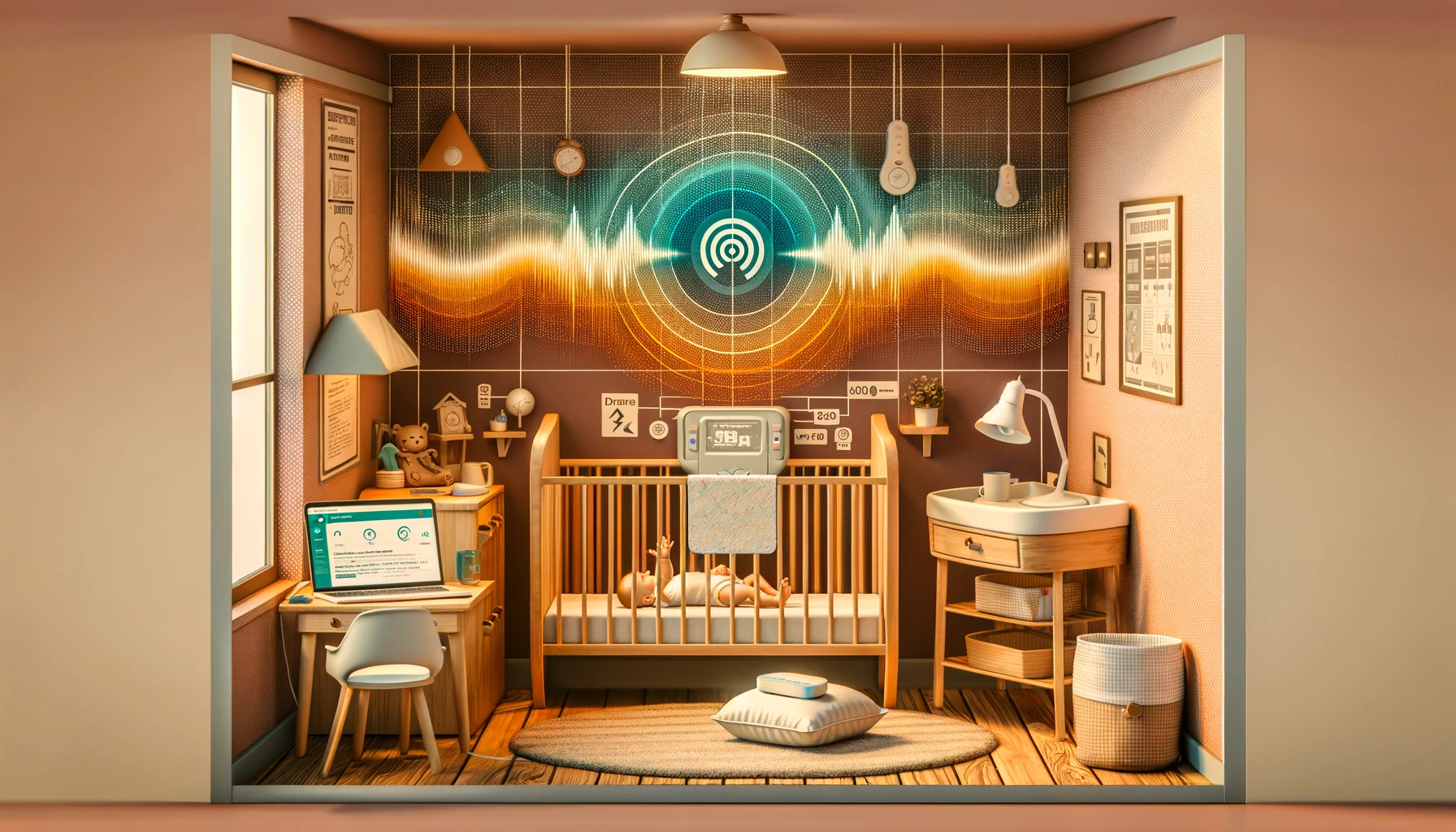Introduction: In today’s tech-driven world, parenting tools like baby monitors and Wi-Fi diapers have become increasingly popular. However, concerns about radiofrequency electromagnetic fields (RF-EMF) and their impact on infants’ health are growing. A recent study by Dimitri Besset et al. sheds light on how RF-EMF exposure can affect sleep patterns in preterm neonates, raising questions about these modern parenting aids.
Insights from Recent Research The study by Besset and colleagues focused on the sleep patterns of preterm neonates exposed to RF-EMF. They found that higher levels of exposure could lead to increased sleep fragmentation and changes in sleep structure. These findings are particularly significant for parents, as they suggest that even low-level RF-EMF exposure could have subtle effects on an infant’s sleep.
Baby Monitors in the Modern Nursery Baby monitors are essential tools for many parents, offering peace of mind and convenience. However, these devices also emit RF-EMF, which, as the study suggests, could impact infants’ sleep. While the evidence is not conclusive, it is important for parents to be aware of this potential risk. Opting for low-emission monitors or placing them at a safe distance from the crib could be wise precautions.
Wi-Fi Diapers – Innovation vs. Safety Wi-Fi diapers represent a leap in childcare technology, alerting parents to a baby’s needs via smartphone notifications. Despite their innovative nature, these diapers raise concerns due to their proximity to the infant and the potential for continuous RF-EMF exposure. While there is no direct evidence linking them to sleep disturbances, the cautionary principle from the aforementioned study may still apply.
Parental Guidance on RF-EMF Parents can take steps to minimize RF-EMF exposure. Using wired monitors instead of wireless ones, choosing low-emission products, and limiting the use of Wi-Fi-based devices can be effective strategies. It’s about finding a balance that works for each family, prioritizing both convenience and safety.
“Reducing wireless radiation in the hospital setting is an important and practical way to support health and recovery for vulnerable populations. Babies are not making phone calls. Instead they are exposed to wireless radiation from the Wi-Fi network and all of the transmitting devices inside the building, as well as outdoor cell tower antennas. ” stated Theodora Scarato Director of Environmental Health Trust who pointed to the pilot program of the Archbishop Makarios Hospital whereby wireless was removed from the neonatal and pediatric units. Scarato also highlighted a review published Current Problems in Pediatric and Adolescent Health Care entitled “Wireless technologies, non-ionizing electromagnetic fields and children: Identifying and reducing health risks” detailing steps for medical institutions to take to reduce EMF levels.
Conclusion: The conversation about RF-EMF exposure in infants is far from over. Ongoing research is crucial to understand its full implications. As we navigate this evolving landscape, staying informed and making mindful choices about the technology we introduce to our children’s environments is key.
Call to Action: We invite you to share your thoughts and experiences. How do you balance the benefits of modern parenting tools with safety concerns? Let’s discuss in the comments below. For more information on RF-EMF and child safety, check out [link to additional resources].








